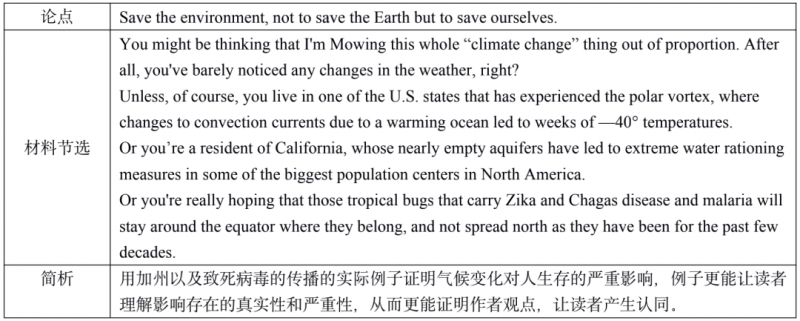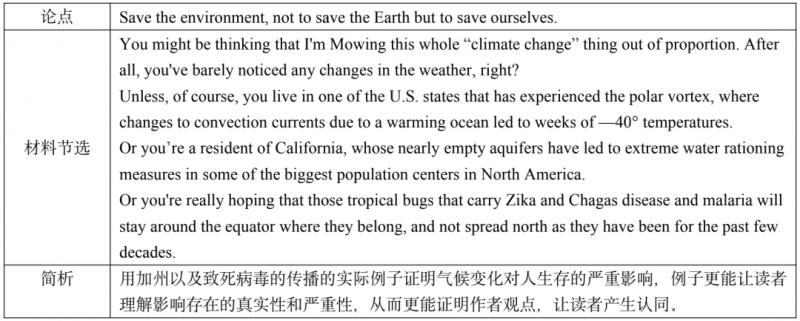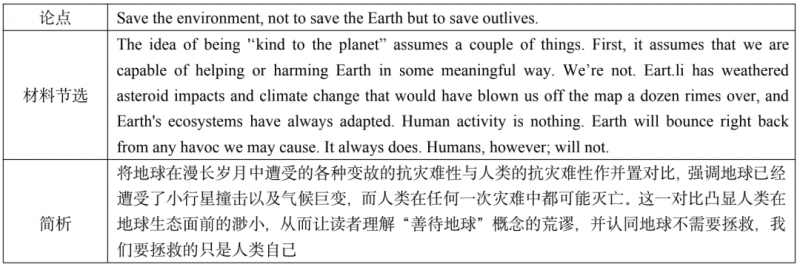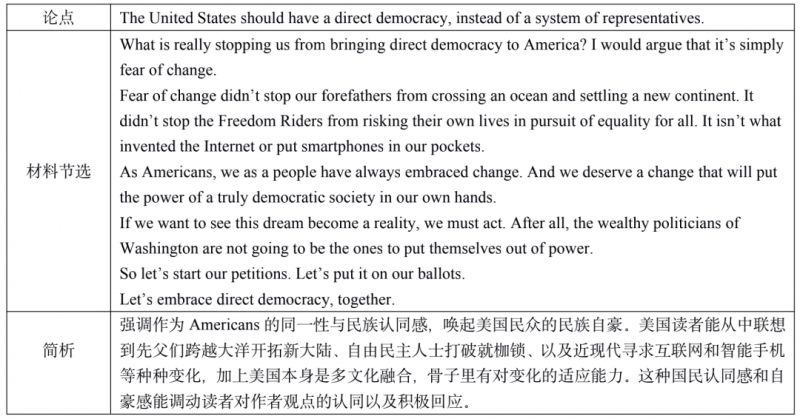
分析性的写作是AP英语语言与写作中常考的一种题型,但是有很多同学都不知道怎么写这部分。正值winter vacation期间,为了让大家更好的应对AP考试,唯寻也推出了圣诞课程班内含AP英语语言与写作课程辅导,如果你的AP课程学习出现了问题,那就赶紧来上课吧!
全文主旨
全文分论点
全文主要论证手法
大纲:
开头段:话题+主旨+方法
中间段:可分3段;按照3个主流方法/按照3节
结论段:重新表述/强调开头段的内容
3段:开头,分论点1,分论点2,分论点3,结尾
按照大纲来写,紧扣文章主旨!
Evidence
Statistics/Data
分析用语参考:
• to indicate a problem
• to make an idea hard to argue against because numbers are perceived as facts, not opinions
• to ground the author’s argument in reality
• to surprise readers
• to put one quantity in relation to another for compare/contrast

Appeal to Authority
引用权威专家、大学、机构或政府的评论、研究、报道
分析用语参考:
• raise credibility by showing the author is not the only one who believes in an idea
• increase trust by showing that an argument is well-researched
• gain acceptance or sympathy from readers who identify or think highly of the authority figure
• establish a precedent that puts peer pressure on other people to do the same

Results from Research/Studies
作用和引用权威以及引用数据类似

Supporting Examples
作用和引用数据以及引用个人经历类似

Anecdotes
个人经历,小故事,有趣的或者难忘的经历,用以明确论点

Rhetorical Devices
Word Choice
一些情感强烈、或生动形象、或与主题相关并令人印象深刻的用词
分析用语参考:
• evoking emotions or images (imagery)
• characterizing a subject or topic in a particular way
• associating positive or negative connotations with something
• setting the tone

Acknowledging the other side/Making Concessions
让步,部分承认反方存在的客观性和合理性,然后进行驳论
分析用语参考:
• address counterarguments, doubts, or fears readers may have
• establish common ground
• pave the way for new points to be made, instead of getting bogged down in old ones

Analogies/Comparisons
类比,将相似之处进行阐述比较以便于理解或产生共鸣。
分析用语参考:
• allow readers to understand more complex concepts by comparing them with simpler ones
• associate new ideas with ones the reader is already familiar with
• lead the reader into agreement by connecting something new with something the reader has agreed with or done

Juxtaposition
将两个事物并列进行比较(相似之处)或对比(不同之处)。与analogy的区别在于,juxtaposition不注重两个比较或对比事物之间的概念相似性,而是单纯将他们列在一起强调彼此的不同之处,或者凸显一个观点比另一个观点高明的地方。在AP写作中,juxtaposition常出现在过去、现在的对比,或者国家之间的对比中。
分析参考用语:
• emphasize a problem

Challenging Assumptions
反驳一些人们可能普遍存有的观点,或是人们认为理所当然的概念。
分析参考用语:
• enables an argument to proceed from a clean slate
• dismisses any preconceived ideas or biases that may run counter to his or her argument

Rhetorical Questions
设问或者反问
分析参考用语:
• prods readers into agreeing or answering for themselves in a certain way
• gets the reader to imagine a certain scenario
• lays out common ground or assumptions that the author can then build upon

Hypothetical Situations(假设场景)
用法以及修辞目的与rhetorical questions类似。
分析参考用语:
• Gets the reader to imagine certain possibilities 'without having to state them explicitly
• Allows the author to describe certain outcomes in a way that benefits his or her argument

Appeal to Identity
强调认同感与同一性。这是利用群体的共同价值观和信仰,其说服力来自于人类是寻求归属感的社会生物,我们会被那些增强归属感的想法所吸引。

Strong Directives with the Collective Pronoun “We”
集合代词“we”通常和指令一起出现,将作者和读者联系起来,使他们成为一个更大的群体的一部分,拥有共同的目标。通过使用“我们”,作者把自己描绘成与观众站在同一立场上的人,更能呼吁读者一致地站在作者这一边,用很强的建议性和呼吁性告诉读者下一步该采取什么行动的,以及作为对读者行动的召唤。

Introduction
The idea that Main argument of the passage has its roots in. Noun but the underlying reasons are often overlooked.
In Title of passage , author Author of passage puts forth a detailed argument for Noun.
In doing so, he/she employs a variety of rhetorical elements to persuade the reader, including Persuasive element 1 , Persuasive element 2 , and Persuasive 'element 3 .
Body Paragraph 1
Author or passage’s deft use of Persuasive element 1begins with his/her discussion of Noun.
Your analysis using die Narrate-Explain-Reiterate Pattern (coveted in the next chapter)
6 + sentences
Although Persuasive element 1 may come off as hyperbole/pandering/overly dramatic,
Your rebuttal (reinforce why it’s effective).
Body Paragraph 2
Just as persuasive as his/her use of Persuasive element 1 is Author of passage’s Persuasive element 2 .
Your analysis using the Narrate-Explain-Reiterate Pattern (covered in the next chapter)
6 + sentences
Without Persuasive element 2, Author of passage’s message would lose Noun.
Body Paragraph 3
Lastly, Author of passage bolsters his argument by using Persuasive element 3.
Your analysis using the Narrate-Explain-Reiterate Pattern (covered in the next chapter)
6 + sentences
Conclusion
In summary, Author of passage —using Persuasive element 1. Persuasive element 2 , and Persuasive element 3 -effectively makes the case that Main argument of the passage.
It’s his/her use of persuasive elements that not only inform the reader of the problem but also spur the reader into action.
以上就是AP英语语言与写作的方法介绍了,同学们现在就一定要重视这门科目哦,只有付出了努力,才会有收获,一定要能够明确自己的目标,毕竟现在大学对于同学们的学术成绩要求越来越高了,只有考出好成绩才有进入目标大学的可能。想了解更多AP课程信息吗?赶紧点击AP秋季课程班和面对面吧!

点击
AP英语语言与写作的议论文怎么写 学会构思写作大纲是得分关键
查看更多。

学习有方法,成长看得见
筑梦牛剑/G5/常春藤
